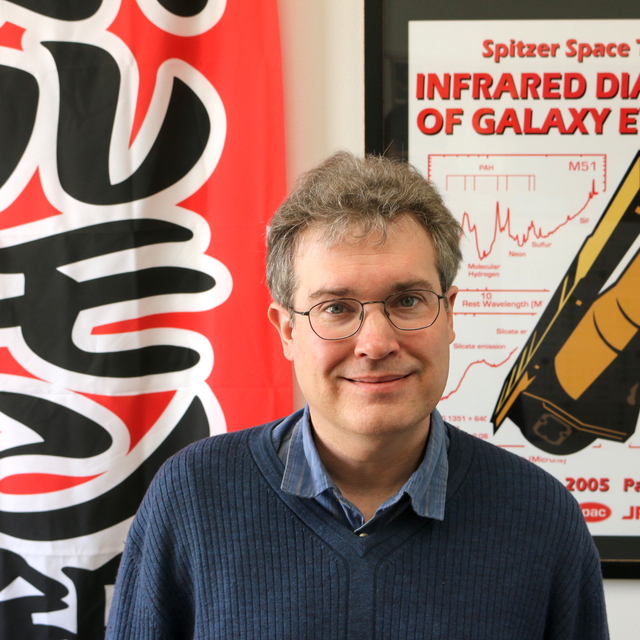September
2020
•
2020ApJ...900..183W
Authors
•
Wang, Xin
•
Jones, Tucker A.
•
Treu, Tommaso
•
Daddi, Emanuele
•
Brammer, Gabriel B.
•
Sharon, Keren
•
Morishita, Takahiro
•
Abramson, Louis E.
•
Colbert, James W.
•
Henry, Alaina L.
•
Hopkins, Philip F.
•
Malkan, Matthew A.
•
Schmidt, Kasper B.
•
Teplitz, Harry I.
•
Vulcani, Benedetta
Abstract
•
We present the hitherto largest sample of gas-phase metallicity radial gradients measured at sub-kpc resolution in star-forming galaxies in the redshift range of z ∈ [1.2, 2.3]. These measurements are enabled by the synergy of slitless spectroscopy from the Hubble Space Telescope near-infrared channels and the lensing magnification from foreground galaxy clusters. Our sample consists of 76 galaxies with stellar mass ranging from 107 to 1010 ${M}_{\odot }$ , an instantaneous star formation rate in the range of [1, 100] ${M}_{\odot }$ yr-1, and global metallicity $[\tfrac{1}{12},2]$ of solar. At a 2σ confidence level, 15/76 galaxies in our sample show negative radial gradients, whereas 7/76 show inverted gradients. Combining ours and all other metallicity gradients obtained at a similar resolution currently available in the literature, we measure a negative mass dependence of Δlog(O/H)/ ${\rm{\Delta }}r\,[\mathrm{dex}\,{\mathrm{kpc}}^{-1}]$ = (-0.020 ± 0.007) + (-0.016 ± 0.008) $\mathrm{log}({M}_{* }/{10}^{9.4}\,{M}_{\odot })$ , with the intrinsic scatter being σ = 0.060 ± 0.006 over 4 orders of magnitude in stellar mass. Our result is consistent with strong feedback, not secular processes, being the primary governor of the chemostructural evolution of star-forming galaxies during the disk mass assembly at cosmic noon. We also find that the intrinsic scatter of metallicity gradients increases with decreasing stellar mass and increasing specific star formation rate. This increase in the intrinsic scatter is likely caused by the combined effect of cold-mode gas accretion and merger-induced starbursts, with the latter more predominant in the dwarf mass regime of ${M}_{* }\lesssim {10}^{9}\,{M}_{\odot }$ .
Links





